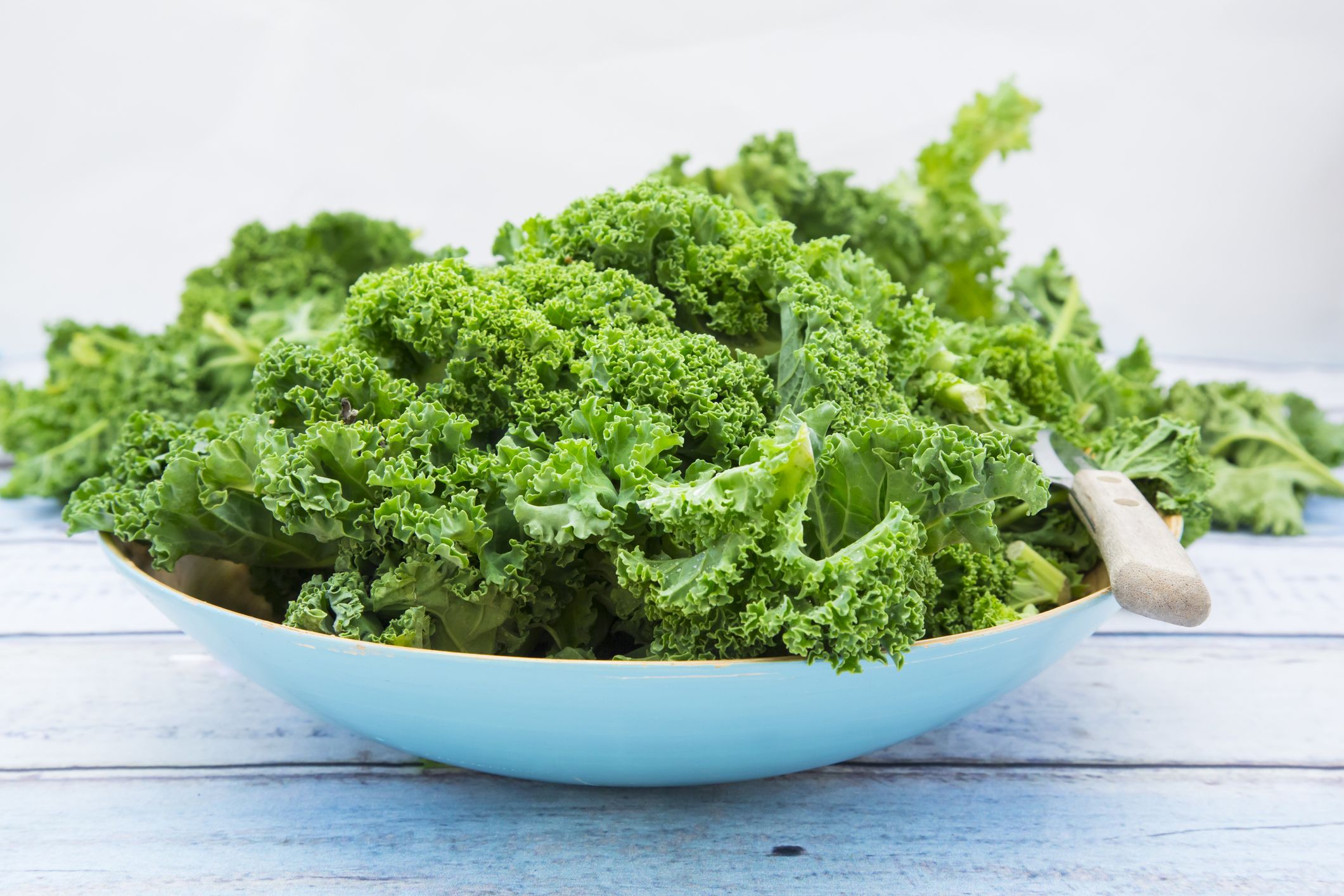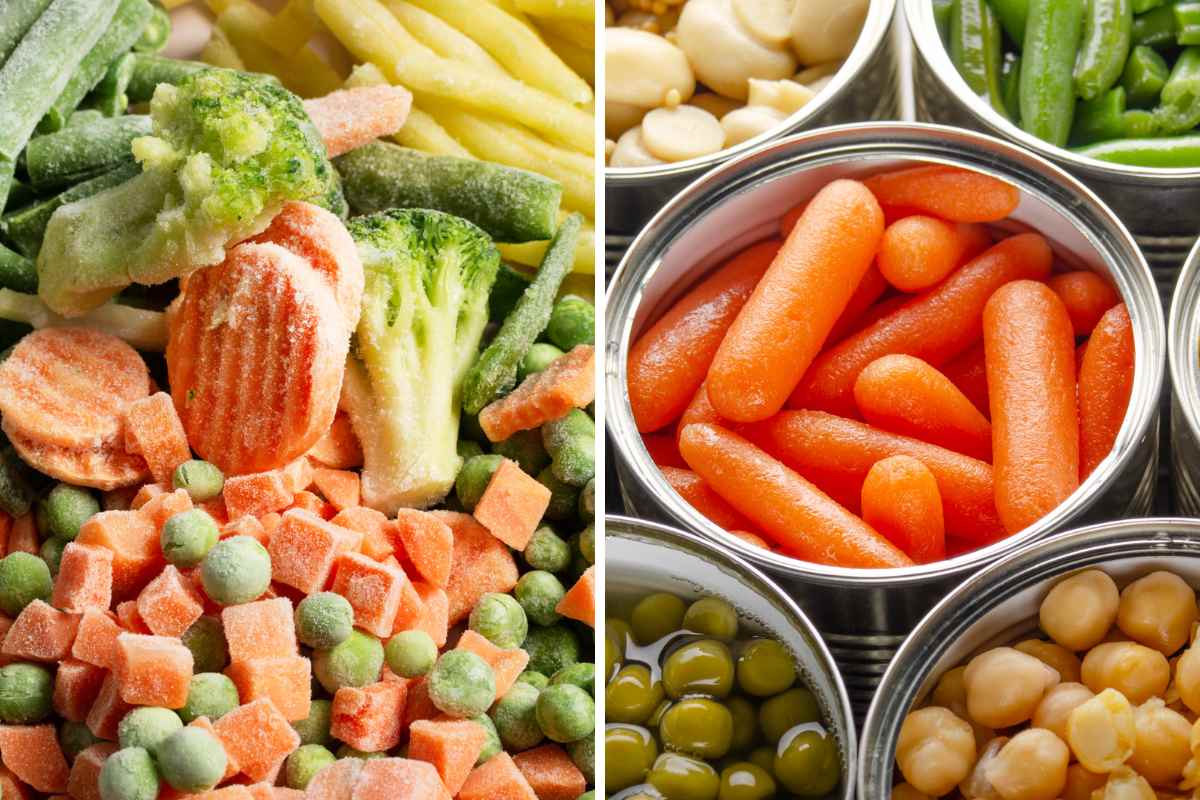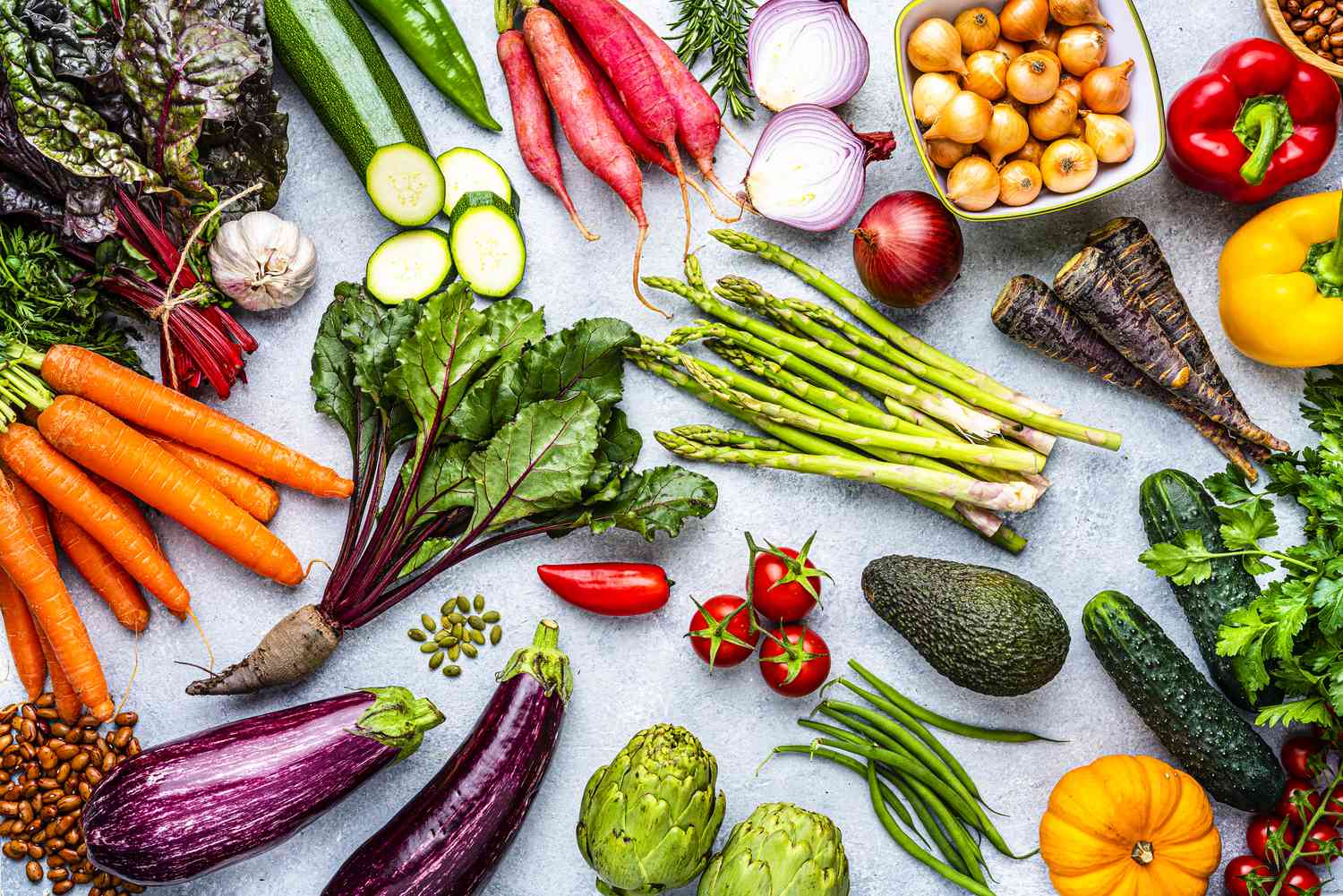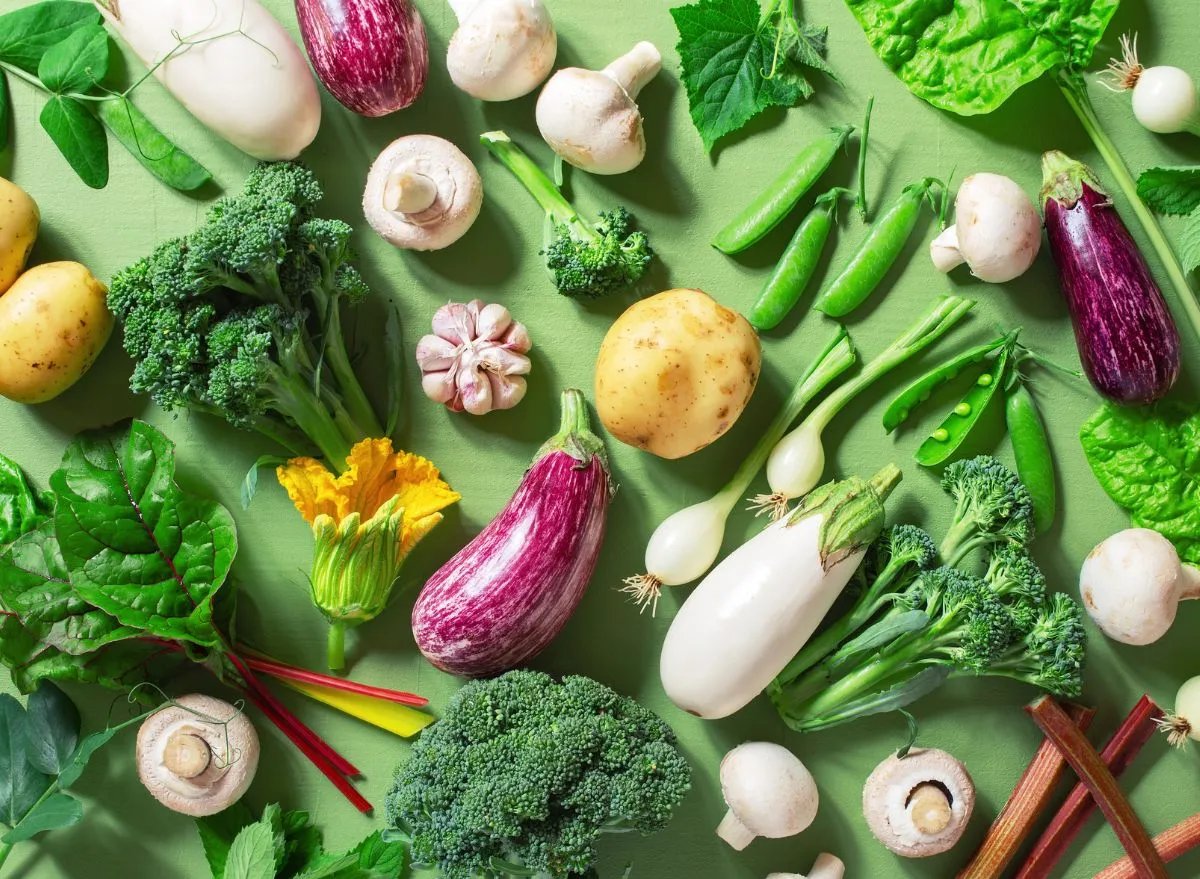Home>Gardening News and Trends>Latest News>Which Vegetables Are High In Calcium


Latest News
Which Vegetables Are High In Calcium
Modified: January 22, 2024
Discover the latest news on vegetables high in calcium. Find out which ones are packed with this essential nutrient for strong bones and teeth.
(Many of the links in this article redirect to a specific reviewed product. Your purchase of these products through affiliate links helps to generate commission for Chicagolandgardening.com, at no extra cost. Learn more)
Table of Contents
Introduction
Eating a well-balanced diet that includes a variety of nutrients is essential for maintaining good health. When it comes to bone health, calcium plays a vital role, and getting enough of it is crucial for individuals of all ages. While many people turn to dairy products as a primary source of calcium, it is important to note that there are alternative options for those who follow a dairy-free or vegan diet.
In this article, we will explore a range of vegetables that are high in calcium, providing a valuable option for incorporating this essential mineral into your daily intake. Whether you are lactose-intolerant, vegan, or simply looking to diversify your calcium sources, these vegetables can help meet your nutritional needs.
It’s worth noting that the amount of calcium varies in different vegetables, so it’s important to consume a combination of these options to ensure adequate intake. Additionally, it’s essential to maintain a well-balanced diet and consult with a healthcare professional or a registered dietitian to personalize your dietary plan.
Now, let’s dive into the world of vegetable sources of calcium and discover the delicious and nutritious options that you can incorporate into your meals.
Leafy Green Vegetables
Leafy green vegetables are not only rich in vitamins and minerals but also a great source of calcium. Incorporating these vegetables into your diet can provide you with the necessary calcium intake without relying solely on dairy products. Here are some leafy green vegetables that are high in calcium:
- Kale: Known for its impressive nutritional profile, kale is an excellent source of calcium. One cup of cooked kale provides around 100 milligrams of calcium, which is about 10% of the recommended daily intake.
- Spinach: Spinach is not only a popular vegetable but also a calcium powerhouse. One cup of cooked spinach contains approximately 240 milligrams of calcium, contributing to almost a quarter of the recommended daily intake.
- Collard Greens: Collard greens are another leafy green packed with calcium. A cup of cooked collard greens can provide around 350 milligrams of calcium, meeting about 35% of the daily recommended intake.
- Turnip Greens: Turnip greens are not only delicious but also a great source of calcium. One cup of cooked turnip greens contains approximately 200 milligrams of calcium, contributing to about 20% of the recommended daily intake.
These leafy green vegetables can be enjoyed in various ways, such as sautéing, adding them to soups or salads, or even blending them into smoothies. Incorporating them into your meals can help boost your calcium intake and contribute to overall bone health.
Broccoli
Broccoli is a versatile and nutrient-rich vegetable that provides a wide range of health benefits, including its calcium content. While it may not be as high in calcium as some leafy greens, it still contributes to your daily calcium intake. Here’s what you need to know about broccoli and its calcium content:
A cup of cooked broccoli contains approximately 60 milligrams of calcium, which accounts for about 6% of the recommended daily intake. While this may seem relatively low, it is important to consider that broccoli also contains other essential minerals and vitamins that contribute to overall bone health.
In addition to calcium, broccoli is rich in vitamin K, which is necessary for calcium absorption and bone formation. It is also a good source of vitamin C, which aids in collagen synthesis, a vital component for bone strength and structure.
One of the great things about broccoli is its versatility in cooking. You can steam it, roast it, stir-fry it, or even enjoy it raw in salads and dips. By incorporating broccoli into your meals regularly, you not only increase your calcium intake but also benefit from its other nutritional properties.
Whether you enjoy it as a side dish, in a stir-fry, or mixed into a tasty casserole, broccoli is a delicious and nutritious way to boost your calcium intake and support healthy bones.
Okra
Okra, also known as lady’s fingers, is a vegetable that often takes center stage in various cuisines around the world. Aside from its unique texture and flavor, okra is also an excellent source of calcium. Here’s why you should consider incorporating okra into your diet:
A cup of cooked okra contains approximately 85 milligrams of calcium, contributing to about 8% of the recommended daily intake. While it may not provide as much calcium as some other vegetables on this list, okra offers other health benefits that make it worth including in your meals.
In addition to calcium, okra is high in fiber, antioxidants, and vitamin C. These nutrients play a role in promoting overall bone health and providing protection against bone-related conditions, such as osteoporosis.
Okra is a versatile vegetable that can be cooked in several ways, including sautéing, stir-frying, boiling, or adding it to soups and stews. Its slimy texture can be off-putting for some, but it can be mitigated by cooking methods like stir-frying or using acidic ingredients like lemon juice or vinegar.
By incorporating okra into your meals, you not only increase your calcium intake but also enjoy a nutritious vegetable that offers a range of health benefits. So why not give okra a try and explore the various delicious ways to prepare it?
Green Beans
Green beans, also known as snap beans or string beans, are a popular vegetable that provides numerous health benefits. Along with being a rich source of vitamins and minerals, green beans also offer a decent amount of calcium. Here’s why you should consider adding green beans to your diet:
A cup of cooked green beans contains approximately 58 milligrams of calcium, accounting for about 6% of the recommended daily intake. While it may not be as high in calcium as some other vegetables, green beans contribute to your overall calcium intake, especially when combined with other calcium-rich foods.
In addition to calcium, green beans are packed with other essential nutrients like vitamin K, which is necessary for bone health and calcium absorption. They are also a great source of fiber, which aids in digestion and supports overall gut health.
Green beans are incredibly versatile and can be enjoyed in various ways. They can be steamed, sautéed, stir-fried, added to salads, or even pickled. Incorporating green beans into your meals not only adds a nutritional boost but also provides a satisfying crunch and vibrant color to your plate.
Whether you include them in a stir-fry, pair them with grilled protein, or toss them into a salad, green beans are a delicious and nutritious vegetable to help increase your calcium intake.
Sweet Potatoes
Sweet potatoes are not only a delicious and versatile vegetable but also a good source of calcium. Packed with nutrients and natural sweetness, sweet potatoes offer a range of health benefits. Let’s take a closer look at why you should incorporate sweet potatoes into your diet:
A medium-sized sweet potato contains approximately 45 milligrams of calcium, contributing to about 4% of the recommended daily intake. While it may not provide as much calcium as some other vegetables, sweet potatoes offer other essential nutrients that support bone health.
In addition to calcium, sweet potatoes are loaded with antioxidants, vitamins, and minerals. They are rich in vitamin A, which promotes healthy bones and plays a crucial role in bone cell regeneration. Sweet potatoes are also a good source of vitamin C, which aids in collagen production and supports bone strength.
Furthermore, the natural sweetness of sweet potatoes makes them a versatile ingredient in both sweet and savory dishes. They can be baked, boiled, mashed, or turned into fries or chips. Adding sweet potatoes to your meals not only boosts your calcium intake but also provides a flavorful and nutritious addition.
Whether you enjoy them as a side dish, use them as a base for a hearty bowl, or incorporate them into baked goods, sweet potatoes are a tasty and nutritious way to increase your calcium intake and support overall bone health.
Butternut Squash
Butternut squash is a versatile and delicious winter vegetable that not only adds flavor to your meals but also provides essential nutrients, including calcium. With its vibrant orange flesh and sweet taste, butternut squash is a great addition to your diet. Let’s explore its calcium content and benefits:
A cup of cooked butternut squash contains approximately 84 milligrams of calcium, contributing to about 8% of the recommended daily intake. While it may not be as high in calcium as some other vegetables, butternut squash offers a range of other nutrients that promote bone health.
In addition to calcium, butternut squash is a great source of vitamin A, which is essential for healthy bones and teeth. It also provides a significant amount of vitamin C, an antioxidant that aids in collagen production and supports bone strength.
Butternut squash can be enjoyed in various ways, from roasted cubes or mashed as a side dish to pureed for soups or added to pasta dishes. Its creamy texture and slightly sweet flavor make it a popular choice for fall and winter recipes.
By incorporating butternut squash into your meals, you not only increase your calcium intake but also benefit from its other nutrients and antioxidant properties. So why not embrace the versatility of this delicious vegetable and explore new culinary possibilities?
Edamame
Edamame, young soybeans harvested before they ripen, are a popular and nutritious snack that also offers a good amount of calcium. In addition to being tasty, edamame is a fantastic plant-based source of protein and other essential nutrients. Let’s explore the calcium content and benefits of edamame:
One cup of cooked edamame contains approximately 98 milligrams of calcium, contributing to about 10% of the recommended daily intake. Along with its calcium content, edamame is also rich in other minerals like magnesium and potassium, which are important for supporting bone health.
Furthermore, edamame is a complete protein, meaning it contains all the essential amino acids that the body needs. Protein plays a crucial role in the regeneration and maintenance of bones and muscles.
Edamame can be enjoyed as a snack on its own or added to salads, stir-fries, or rice dishes. Its mild and slightly nutty flavor pairs well with a variety of flavors, making it a versatile ingredient in many recipes.
By including edamame in your diet, you not only increase your calcium intake but also benefit from its protein and nutrient content. So next time you’re looking for a healthy and satisfying snack or a protein-rich addition to your meals, reach for a handful of edamame.
Almonds
Almonds are not only a delicious and nutritious snack but also a great source of calcium. These nuts are packed with essential minerals, healthy fats, and antioxidants, making them a valuable addition to your diet. Let’s explore why almonds are a fantastic calcium-rich option:
A quarter cup of almonds provides approximately 95 milligrams of calcium, accounting for about 10% of the recommended daily intake. In addition to being an excellent calcium source, almonds offer other essential nutrients like magnesium and vitamin E, which are beneficial for bone health.
Almonds are also a good source of healthy fats, including monounsaturated fats, which have been linked to improved bone density and reduced risk of osteoporosis.
These versatile nuts can be enjoyed in various ways. You can snack on them raw, add them to salads or yogurt, use them in baking, or even make your own almond butter. The options are endless when it comes to incorporating almonds into your daily meals and snacks.
Keep in mind that while almonds are an excellent calcium-rich snack, it’s important to consume them in moderation since they are also calorie-dense. A quarter cup of almonds provides approximately 170 calories, so portion control is essential.
By incorporating almonds into your diet, you not only increase your calcium intake but also benefit from their nutrient profile, including healthy fats and antioxidants. So next time you’re looking for a wholesome and calcium-rich snack, reach for a handful of almonds.
Sesame Seeds
Sesame seeds are not only a popular ingredient in various cuisines but also a rich source of calcium. These tiny seeds are packed with nutrients and offer numerous health benefits. Let’s take a closer look at the calcium content and advantages of incorporating sesame seeds into your diet:
Just one tablespoon of sesame seeds provides approximately 88 milligrams of calcium, accounting for about 9% of the recommended daily intake. Along with their calcium content, sesame seeds are an excellent source of other minerals like magnesium, iron, and zinc, which all contribute to bone health.
In addition to calcium, sesame seeds are a good source of plant-based protein and healthy fats, including omega-6 fatty acids. Protein is essential for maintaining and repairing bones and muscles, while healthy fats help with nutrient absorption and overall health.
Sesame seeds have a mild and nutty flavor and can be incorporated into your meals in various ways. They can be sprinkled on top of salads, added to stir-fries, used as a coating for proteins, or incorporated into baked goods. You can also enjoy them in the form of tahini, a creamy paste made from ground sesame seeds.
It’s worth noting that sesame seeds are calorie-dense, so moderation is key. A tablespoon of sesame seeds contains approximately 50 calories. It’s recommended to include them as part of a well-balanced diet and pay attention to portion sizes.
By including sesame seeds in your meals and snacks, you not only increase your calcium intake but also benefit from their overall nutrient profile. So next time you’re looking to add a nutty and nutritious boost to your dishes, sprinkle on some sesame seeds.
Tofu
Tofu, a popular plant-based protein source made from soybeans, is not only versatile in its culinary applications but also a good source of calcium. This soy-based product has gained popularity among vegetarians, vegans, and those looking for alternative protein options. Let’s explore why tofu is a great addition to a calcium-rich diet:
A half-cup serving of tofu provides approximately 250-300 milligrams of calcium, contributing to about 25-30% of the recommended daily intake. This makes tofu one of the richest plant-based sources of calcium available.
In addition to its calcium content, tofu is an excellent source of protein and other essential nutrients. It contains all nine essential amino acids required by the body and is considered a complete protein. Protein plays a crucial role in maintaining bone health and supporting muscle strength.
Furthermore, tofu is also a good source of iron and magnesium, minerals that aid in bone health and overall well-being.
Tofu is incredibly versatile and can be prepared in various ways to suit different tastes and recipes. You can enjoy it grilled, baked, sautéed, or even blended into smoothies or desserts. Its neutral flavor allows it to absorb the flavors of the ingredients it’s cooked with, making it a versatile ingredient in both savory and sweet dishes.
It’s important to note that the calcium content may vary depending on the type of tofu and how it is processed. For example, calcium-set tofu tends to have a higher calcium content compared to other types.
By incorporating tofu into your meals, you not only increase your calcium intake but also benefit from its protein content and other vital nutrients. So whether you’re a vegetarian, vegan, or simply looking to diversify your diet, tofu is a nutritious and delicious option to support your calcium needs.
Conclusion
Incorporating calcium-rich vegetables into your diet is a great way to ensure you meet your daily calcium needs. While dairy products are often the go-to source for calcium, incorporating vegetables that are high in calcium provides valuable alternatives for those who follow a dairy-free or vegan diet.
Leafy green vegetables, such as kale, spinach, collard greens, and turnip greens, offer a substantial amount of calcium, along with additional vitamins and minerals that support bone health. Broccoli, okra, green beans, sweet potatoes, and butternut squash are also excellent sources of calcium and provide a range of other health benefits.
Additionally, incorporating calcium-rich ingredients like edamame, almonds, sesame seeds, and tofu into your meals and snacks can further boost your calcium intake. These options offer not only calcium but also other essential nutrients that contribute to overall bone health.
Remember to incorporate variety into your diet, as each vegetable offers a different nutrient profile. Aim to include different calcium-rich vegetables throughout the week to ensure adequate intake and benefit from a range of health-promoting properties.
It’s important to note that while these vegetables provide a valuable source of calcium, maintaining a well-balanced diet is essential for optimal health. Be sure to consult with a healthcare professional or a registered dietitian to design a personalized dietary plan that suits your specific needs.
So go ahead and get creative in the kitchen by exploring the numerous ways to enjoy these calcium-rich vegetables. Nourish your body with the goodness they offer and support healthy bones for years to come.








